Check the ingredients!
... live healthy!


| "Descrizione" by A_Partyns (12876 pt) | 2023-Jun-26 15:43 |
| Evaluation | N. Experts | Evaluation | N. Experts |
|---|---|---|---|
| 1 | 6 | ||
| 2 | 7 | ||
| 3 | 8 | ||
| 4 | 9 | ||
| 5 | 10 |
4-Isopropyl-m-Cresol is a chemical compound, phenol, is a natural monoterpenoid phenol derived from cimene and isomeric with carvacrol, which is found in thyme oil and is an analogue of thymol, more known by the name o-cymen-5-ol, or as 4-Isopropyl-3-Methylphenol, an iso-Isopropyl cresol typically used as a preservative for its antiseptic properties.
The name defines the structure of the molecule:
The synthesis process takes place in several stages:
It appears as a white powder or white crystals, odourless .

What it is used for and where
Dentistry
It is a component placed on the market in 2009-2010. It is used in toothpastes usually accompanied by zinc chloride to maintain gingival health as a biocide, preservative and fragrance ingredient.
Cosmetics
4-Isopropyl-m-Cresol is a restricted ingredient as V / 38 a Relevant Item in the Annexes of the European Cosmetics Regulation 1223/2009.
o-cymen-5-ol is used in shampoos as a preservative, antiseptic, biocide.
Safety
The Cosmetic Ingredients Revue Panel considered the available data to be insufficient to support the safety of this ingredient in cosmetics and believes that studies are needed to demonstrate the absence of chemical leucoderma at use concentrations of p-cresol and mixed cresols, or to demonstrate a dose response from which a safe concentration could be derived (1), while other more recent studies support its safety at low levels (0.1%) in toothpaste (2).
For more information:
Typical commercial product characteristics 4-Isopropyl-3-Methylphenol
| Appearance | White powder |
| pH | 6.5~7.0 |
| Boiling Point | 233.8±9.0°C at 760 mmHg |
| Melting Point | 111-114°C |
| Flash Point | 104.1±7.2°C |
| Density | 1.0±0.1 g/cm3 |
| Vapor Pressure | 0.0±0.5 mmHg at 25°C |
| PSA | 20.23000 |
| LogP | 3.28 |
| Refraction Index | 1.523 |
| Water | ≤0.2% |
| Residue on ignition | ≤0.1% |
| UV-vis wavelength | 211,270nm |
| Total impurity | ≤1.0% |
| Each impurity | ≤0.5% |
| Chemical Safety | 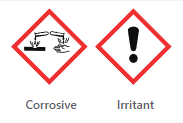 |
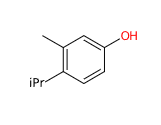 | 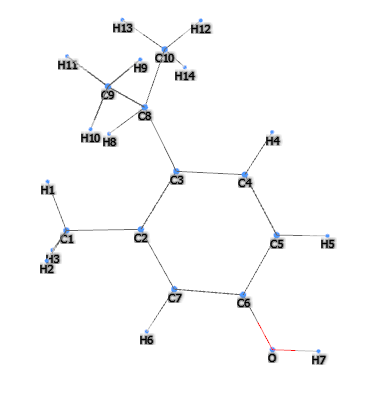 |
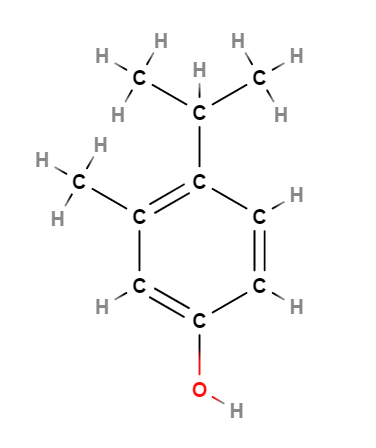 | 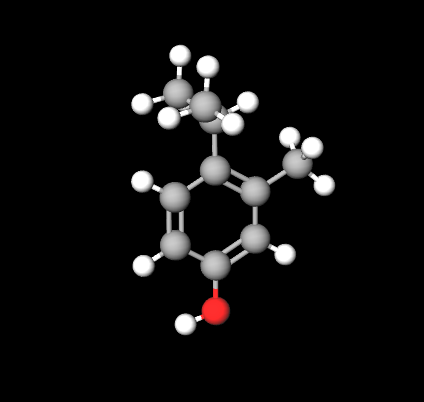 |
Synonyms:
References___________________________________________________________________
(1) Andersen A. Final report on the safety assessment of sodium p-chloro-m-cresol, p-chloro-m-cresol, chlorothymol, mixed cresols, m-cresol, o-cresol, p-cresol, isopropyl cresols, thymol, o-cymen-5-ol, and carvacrol. Int J Toxicol. 2006;25 Suppl 1:29-127. doi: 10.1080/10915810600716653.
(2) Kakar A, Newby EE, Ghosh S, Butler A, Bosma ML. A randomised clinical trial to assess maintenance of gingival health by a novel gel to foam dentifrice containing 0.1%w/w o-cymen-5-ol, 0.6%w/w zinc chloride. Int Dent J. 2011 Aug;61 Suppl 3(Suppl 3):21-7. doi: 10.1111/j.1875-595X.2011.00045.x.
--
A randomised clinical trial to assess maintenance of gingival health by a novel dentifrice containing 0.1%w/w o-cymen-5-ol and 0.6%w/w zinc chloride.Protection against enamel demineralisation using toothpastes containing o-cymen-5-ol, zinc chloride and sodium fluoride.
Churchley D, Newby CS, Willson R, Haider A, Schemehorn B, Lynch RJ.
Int Dent J. 2011 Aug;61 Suppl 3:55-9. doi: 10.1111/j.1875-595X.2011.00050.x.
Kakar A, Newby EE, Kakar K, Ghosh S, Targett D, Bosma ML.
Int Dent J. 2011 Aug;61 Suppl 3:13-20. doi: 10.1111/j.1875-595X.2011.00044.x
Antimicrobial effects of o-cymen-5-ol and zinc, alone & in combination in simple solutions and toothpaste formulations.
Pizzey RL, Marquis RE, Bradshaw DJ.
Int Dent J. 2011 Aug;61 Suppl 3:33-40. doi: 10.1111/j.1875-595X.2011.00047.x.
Benefits of a silica-based fluoride toothpaste containing o-cymen-5-ol, zinc chloride and sodium fluoride.
Newby CS, Rowland JL, Lynch RJ, Bradshaw DJ, Whitworth D, Bosma ML.
Int Dent J. 2011 Aug;61 Suppl 3:74-80. doi: 10.1111/j.1875-595X.2011.00053.x.
| Evaluate |